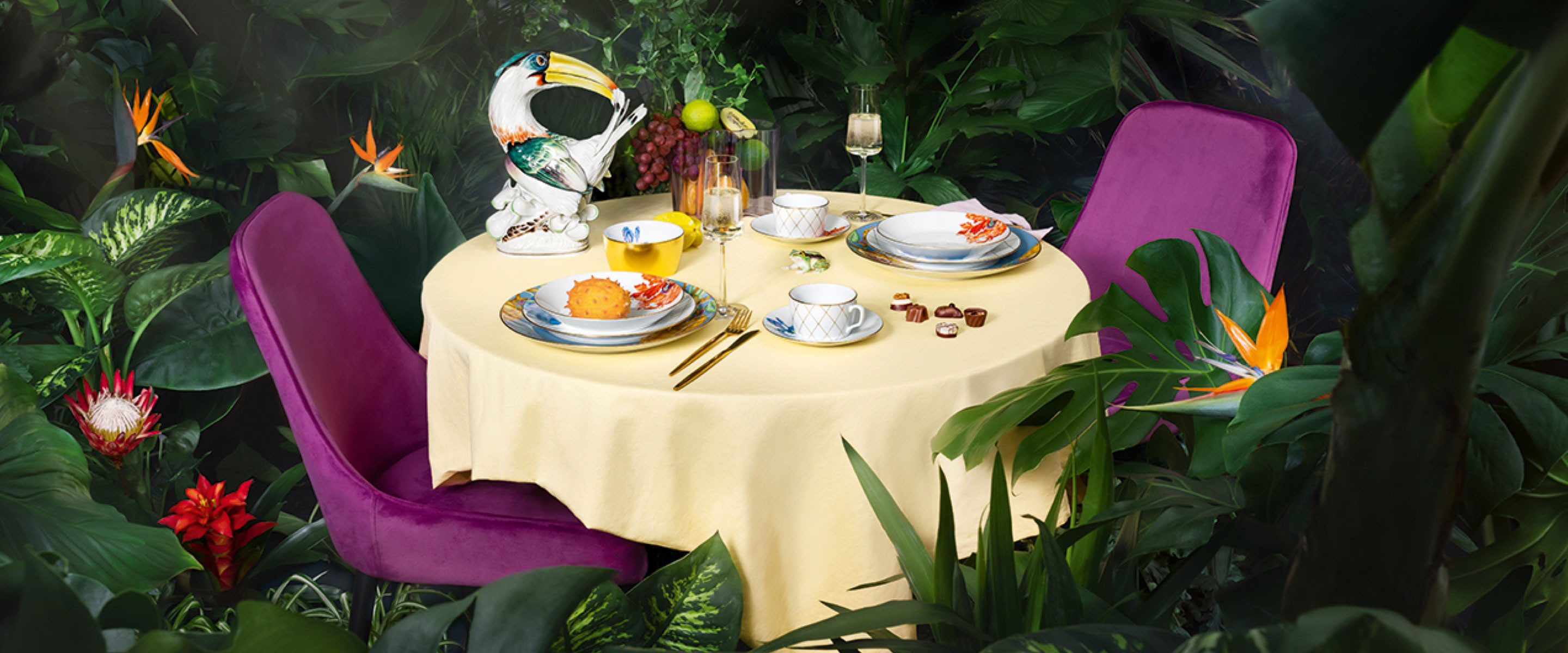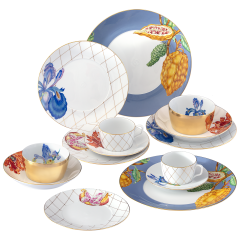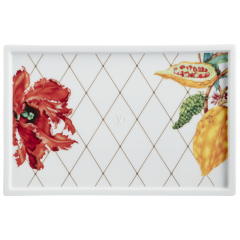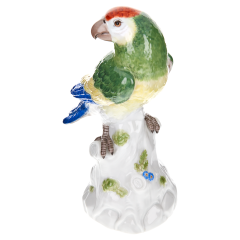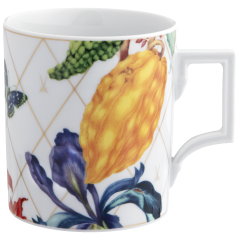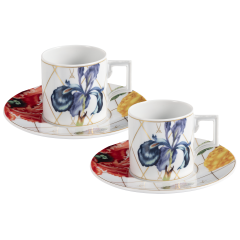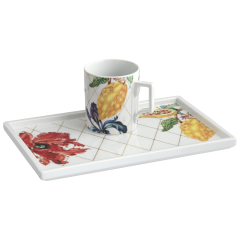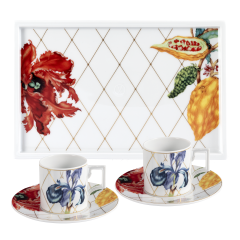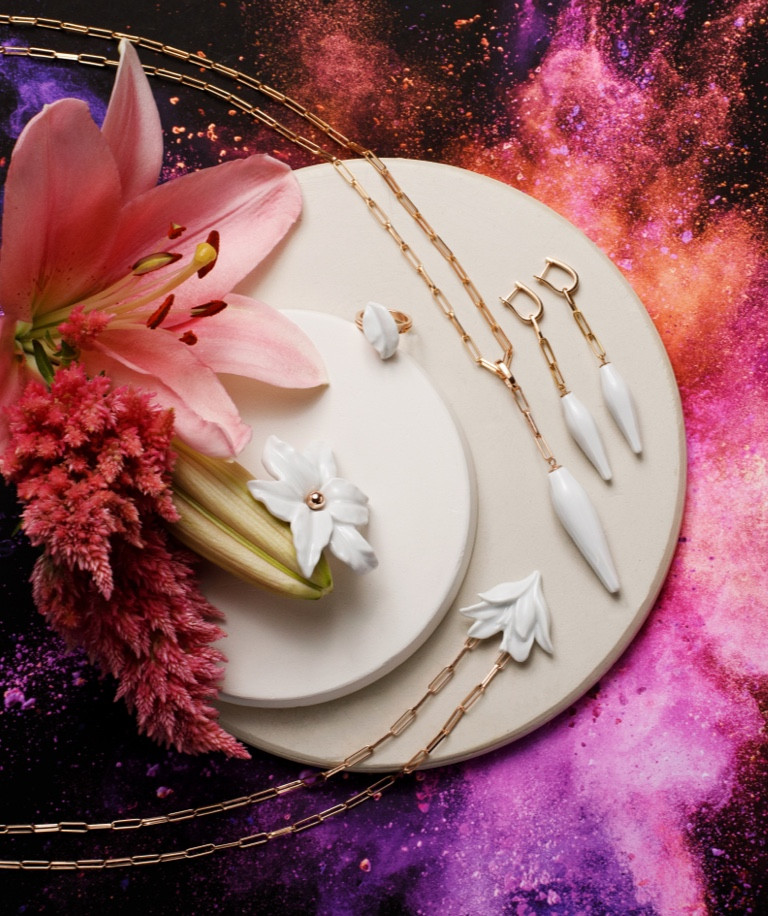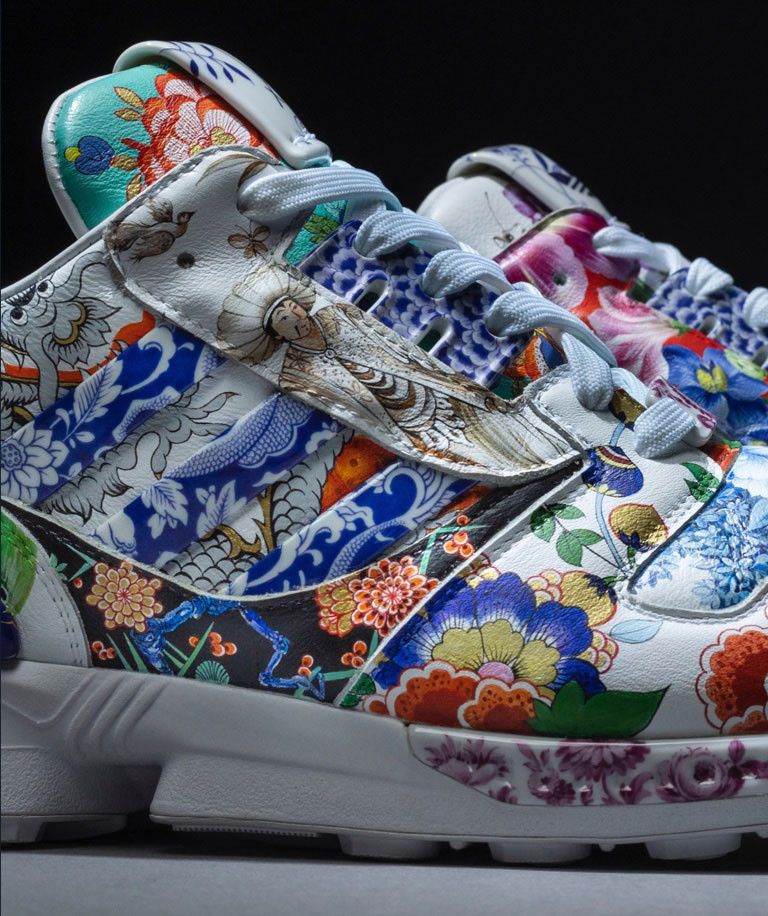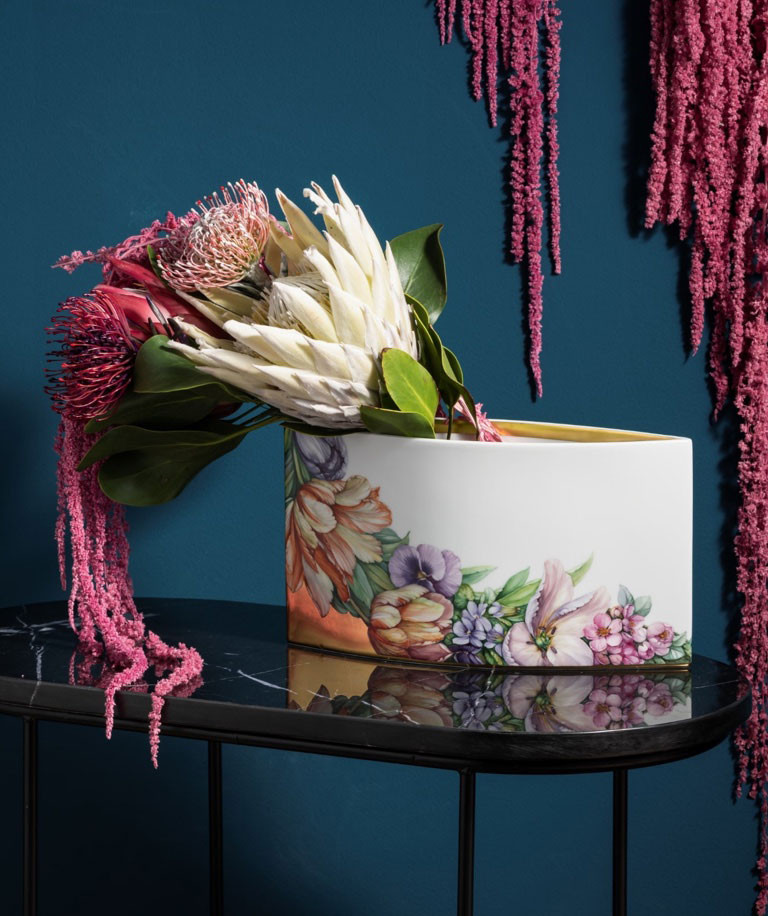Christmas Offer from MEISSEN – Enjoy Exclusive Savings! Learn More.
Skip to Content
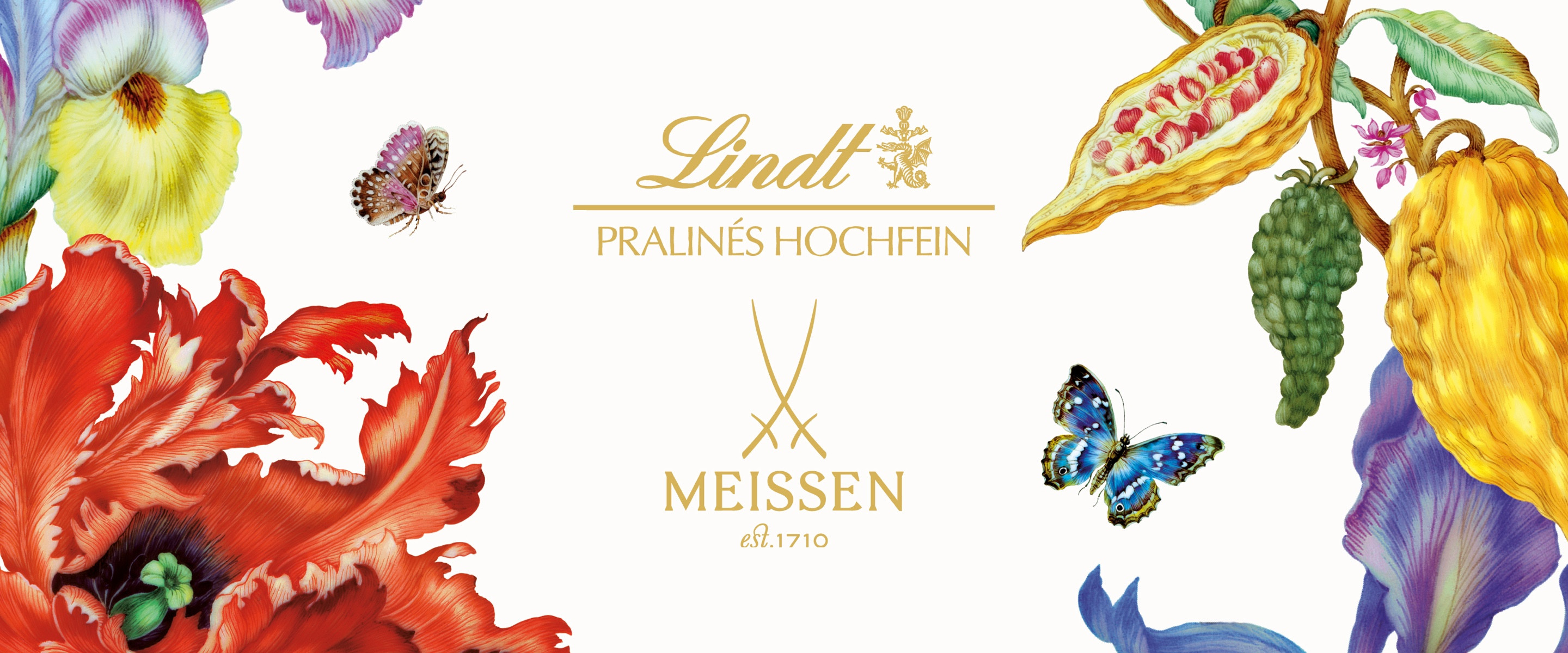

Lindt X Meissen
-
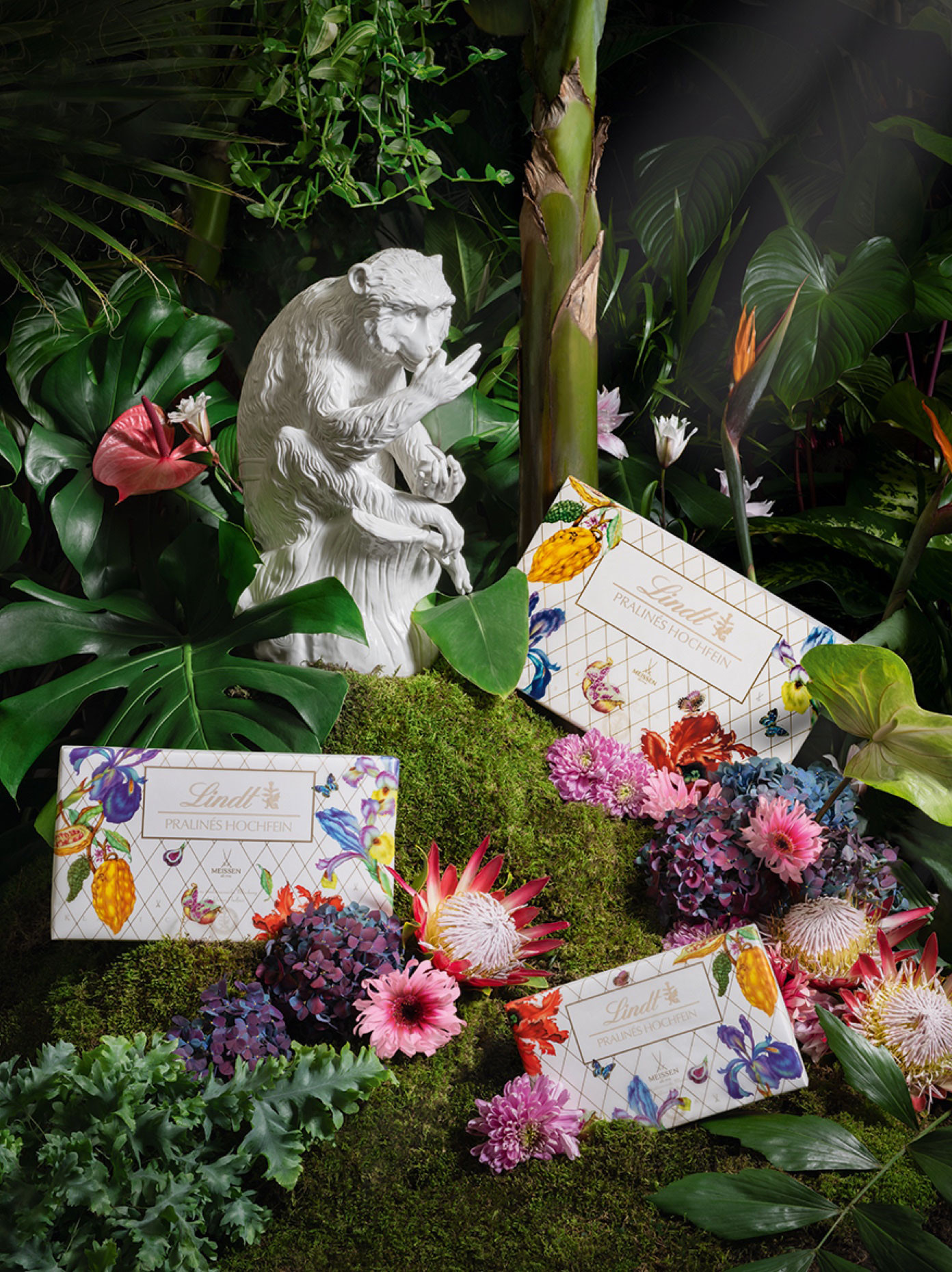 What do MEISSEN porcelain and the Swiss chocolatier Lindt have in common? It's the love for the sweetest of all temptations - for chocolate! United by their passion for highest craftsmanship, perfect design and sensual pleasure, Lindt and MEISSEN had come together for an extraordinary cooperation: For a limited special edition of Lindt HOCHFEIN Pralinés, the porcelain manufactory MEISSEN created the design of the gift packaging. Golden cocoa beans compete in touching beauty with lush feather poppy blossoms, iris flowers and sun-ripened figs, surrounded by delicate butterflies as a symbol of filigree perfection. The inspiration for the design by Lena Hensel came from drawings by the naturalist Maria Sibylla Merian (1647-1717), which she made during a trip to Surinam, a then unexplored coastal state north of Brazil.
What do MEISSEN porcelain and the Swiss chocolatier Lindt have in common? It's the love for the sweetest of all temptations - for chocolate! United by their passion for highest craftsmanship, perfect design and sensual pleasure, Lindt and MEISSEN had come together for an extraordinary cooperation: For a limited special edition of Lindt HOCHFEIN Pralinés, the porcelain manufactory MEISSEN created the design of the gift packaging. Golden cocoa beans compete in touching beauty with lush feather poppy blossoms, iris flowers and sun-ripened figs, surrounded by delicate butterflies as a symbol of filigree perfection. The inspiration for the design by Lena Hensel came from drawings by the naturalist Maria Sibylla Merian (1647-1717), which she made during a trip to Surinam, a then unexplored coastal state north of Brazil.
In addition, the special edition of HOCHFEIN Pralinés was supplemented by an exclusive porcelain series with co-branding in the same decor. The series of fine chocolate plates and mugs, which is still popular today, is able to tempt sinful indulgence like hardly any other collection. The showpiece of the series: the 12-piece MEISSEN® Cosmopolitan service takes porcelain lovers into a world full of exotic sensuality.
In addition, the special edition of HOCHFEIN Pralinés has been supplemented by an exclusive porcelain series with co-branding in the same design. The series with the exquisite chocolate platter, the exclusive mug and the stylish espresso cup and saucer is able to tempt you to indulge in sinful pleasure like no other collection. The showpiece of the series: the 12-piece MEISSEN® Cosmopolitan service transports porcelain lovers into a world of exotic sensuality.
Porcelain and chocolate belong together in an inseparable way. United by an exotic aura, the two have been triumphant in Europe since the end of the 17th century. The connection can be traced right down to our own linguistic usage, when we speak of the "white gold of the Saxons" and the "brown gold of the Aztecs".
Twice as expensive as tea and coffee, chocolate - which was initially only for drinking - was reserved for the aristocracy for a long time and was regarded as a symbol of luxury and courtly enjoyment. The beverage was served in finest porcelain, which was considered the only worthy material, not only because of its characteristic properties, but also because of its value. In their efforts to achieve perfect enjoyment, porcelain designers continued to create new vessel forms that shaped the entire European table culture. Think of the trembleuse, a cup with a raised ring in the saucer that made it impossible to spill chocolate even at breakfast in bed. Or the typical chocolate pot with a hole in the lid - suitable for a whisk to keep the drink freshly stirred.
"Chocolate is happiness that you can eat."
Ursula Kohaupt (German editor and author)
Ursula Kohaupt (German editor and author)
-
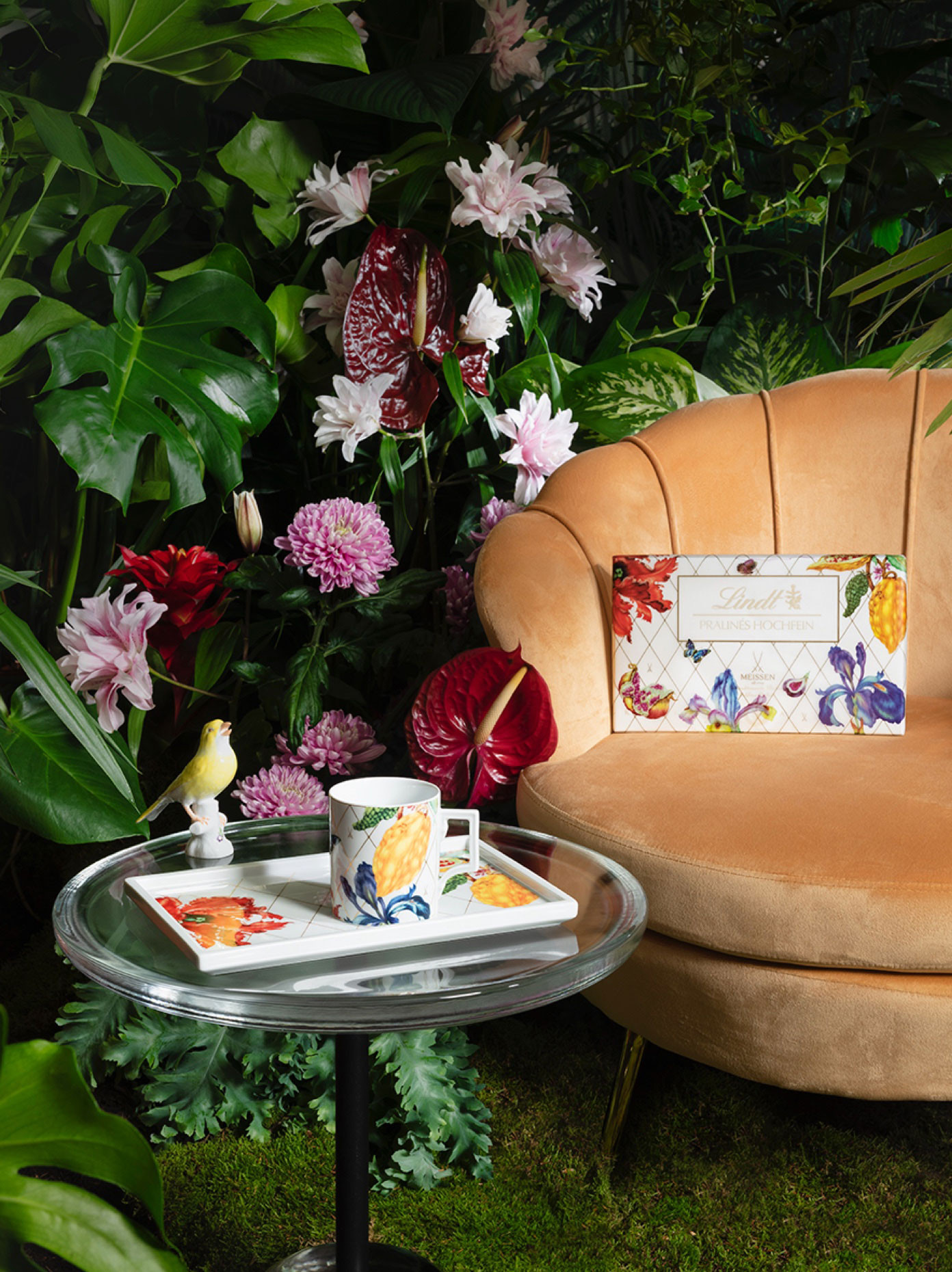 The fact, that today we also can eat chocolate as well as drink it, is a tribute to the British, who introduced the first chocolate bars to the market in 1847. That the sweet treat literally melts in our mouths is, however, thanks to the Swiss. It was the chocolate manufacturer Rodolphe Lindt from Berne who gave the chocolate its delicate melt in 1879. And how could it be otherwise – love had a hand in it: One Friday evening, Lindt left his factory in a hurry, on the way to a rendezvous. In his excitement, he forgot to turn off his stirring machine, which continued to rotate throughout the weekend. When Lindt entered the factory on Monday, he discovered a viscous, thick mass that smelled wonderful and melted in his mouth. Whether Lindt actually had a rendezvous? We don't know. The fact is: Only by conching – stirring the chocolate for hours and hours under gentle heat – the chocolate turns into the tender-melting mass from which the chocolate dreams have been formed since then.
The fact, that today we also can eat chocolate as well as drink it, is a tribute to the British, who introduced the first chocolate bars to the market in 1847. That the sweet treat literally melts in our mouths is, however, thanks to the Swiss. It was the chocolate manufacturer Rodolphe Lindt from Berne who gave the chocolate its delicate melt in 1879. And how could it be otherwise – love had a hand in it: One Friday evening, Lindt left his factory in a hurry, on the way to a rendezvous. In his excitement, he forgot to turn off his stirring machine, which continued to rotate throughout the weekend. When Lindt entered the factory on Monday, he discovered a viscous, thick mass that smelled wonderful and melted in his mouth. Whether Lindt actually had a rendezvous? We don't know. The fact is: Only by conching – stirring the chocolate for hours and hours under gentle heat – the chocolate turns into the tender-melting mass from which the chocolate dreams have been formed since then.
As part of our current collaboration, we have prepared an exciting competition for you. Now you have the chance to win exclusive prizes from the Lindt x MEISSEN collection! Simply upload your receipt for the purchase of a Lindt HOCHFEIN & MEISSEN special edition to our competition page to take part.
You can win:
1 of 10 sets, consisting of a Sweet Exotics chocolate plate MEISSEN® Cosmopolitan, a Sweet Exotics espresso cup and saucer and a 200g pack of LINDT Hochfein in gift-wrap design.
1 of 30 sets, consisting of a Sweet Exotics Home Office Bundle and a 200g pack of LINDT Hochfein in gift-wrap design
1 of 100 sets, consisting of the Sweet Exotics Mug and a 200g pack of LINDT Hochfein in gift-wrap design
All information about the competition can be found at https://www.lindt-meissen.de/. We wish all participants the best of luck and uniquely exotic moments of indulgence with Lindt and MEISSEN.






